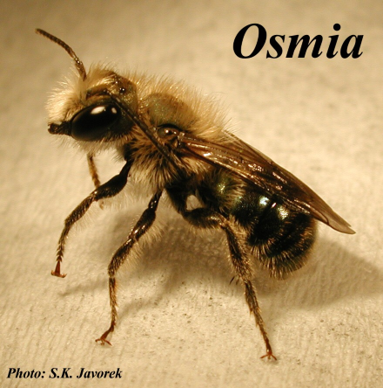Over the last 100 million years, native species shaped our ecosystems. Now, farmers bring in non-native honeybee hives by the truckload to pollinate hectares of non-native crops. And the honeybees could be affecting how native bees do their job. In a 2013 study, Lucas A. Garibaldi found that “overall, wild insects pollinated crops more effectively; an increase in wild insect visitation enhanced fruit set by twice as much as an equivalent increase in honeybee visitation.” But native bees face serious competition: Victoria Wojcik, research director for Pollinator Partnership, notes that honeybees could drive out native bees when the two compete for flowers.
The USGS Native Bee Inventory and Monitoring Program designs and develops large and small scale surveys for native bees. As part of that program they also develop identification tools and keys for native bee species. One aspect of creating those tools is creating accurate and detailed pictures of native bees and the plants and insects they interact with. This site is designed to provide easy access to our photographs so that they may be freely used. There is no need to ask permission for any use of these photographs. You can download the original version directly from Flickr at your convenience: https://www.flickr.com/people/usgsbiml/
Volunteers have sent in photos and samples from all over the world. The survey currently has over 4,000 images, offering an up-close-and-personal encounter with our smallest flora and fauna. At this greatly enlarged scale, the bees look otherworldly. Their compound eyes are traced in striking patterns, and orbs of pollen delicately latch on to their surprisingly furry backsides. This small selection of bees from the American West demonstrates an immense, previously unseen diversity and shows viewers there's a lot more to the story of bees than just honeybee hives.
Learn how to collect bees for the survey: http://bio2.elmira.edu/fieldbio/handybeemanual.html
Please contact Sam Droege for further information at sdroege@usgs.gov or or 301-497-5840 or visit their website at: www.pwrc.usgs.gov/nativebees/
Attached Images:
